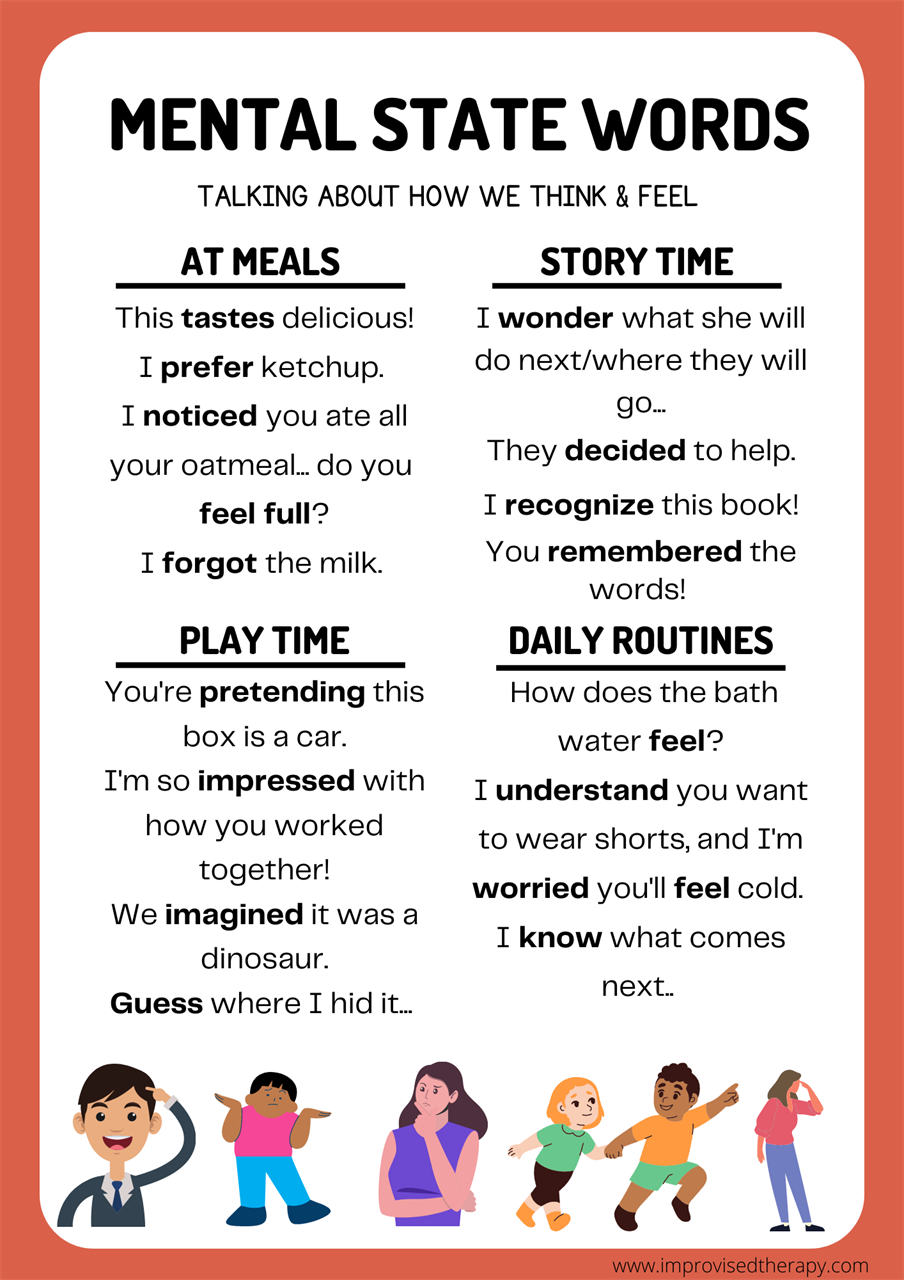By Rachel Kammeyer, MA, CCC-SLP  First words and expanding vocabulary are such important aspects of childhood development. No matter whether your child is preverbal or chatting up a storm, it’s never too early or too late to consider the types of words we as parents use to support our children’s language acquisition. One group of words that parents can use with intention are mental state verbs.
First words and expanding vocabulary are such important aspects of childhood development. No matter whether your child is preverbal or chatting up a storm, it’s never too early or too late to consider the types of words we as parents use to support our children’s language acquisition. One group of words that parents can use with intention are mental state verbs.
Few categories of words offer as much long-term bang for their buck as this group of verbs. Mental states reflect the thoughts and feelings of a speaker and, later in development, the concept of Theory of Mind, which is the ability to understand that someone *else* has their own thoughts and feelings. This is critical for social emotional learning, as it helps convey wants, desires, feelings, and responses to events and internal discomfort or pleasure. What’s also amazing is how children’s ability to communicate their own desires is consistent across cultures and languages (though many more studies of non-English speaking children is definitely required), even when adult use of verbs about thinking is relatively sparse.
Mental states are also important for story comprehension, understanding why a character has responded to an event in a particular way. This has benefits down the road in academic contexts, as children eventually have to infer the thoughts and feelings of characters from texts. Mental states are also linked to the development of executive function, as their use reflects the understanding of intentionality, planning, and prediction of events that are remote in time and space.
All of this may sound very technical and complicated, but actually for parents it is quite easy to start highlighting these words in our own conversations with our children and emphasizing them during activities we are already doing, like story time and meals.
Some ways to incorporate mental states at home or out in the world are to:
- Use gestures to point to your head, cradle your chin, or indicate you aren’t sure, when talking about thoughts you are having or your child might be having.
- Exaggerate expressions that match the type of mental state you are emphasizing. Are you wondering about where you put your keys? Say it aloud and add a super quizzical face.
- Embed questions you might ask within a statement that includes a mental state, such as the absolutely golden word wonder. “I wonder where your shoes are.” Or “I wonder what color this ball is.” This phrasing not only takes some of the demands of having to answer a question off the table, it can also create opportunities for our children to show us what they know during activities instead of parents becoming the “drill sergeants” who are quizzing our children.
- Use wordless picture books to tell stories and describe the characters’ expressions, intentions, plans, and reactions. A few of my favorites are Chalk, Pancakes for Breakfast, Carl's Birthday (or any of the Good Dog, Carl books), or Frog, Where Are You?
I have created this chart to help jump start your mental state sprinkles at home. You might find you are already saying all of these phrases and more!

![]()
Rachel Kammeyer, MA, CCC-SLP is a speech-language pathologist who loves narrative, executive function, and finding simple ways to enrich the learning of individuals across the lifespan. She offers free screenings of childhood speech and language disorders and offers caregiver training and support through the Learn With Less® Framework. Learn more at www.improvisedtherapy.com